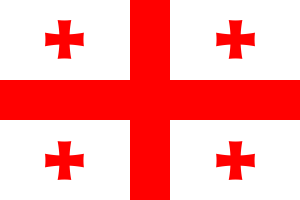Language/Georgian/Grammar/The-verb-“to-have”
In this lesson, we will study how to use the verb “to Have” in the Georgian language.
Don't miss the chance to check out these pages as you wrap up this lesson: The Conjugation System, Future Tense, “to live” ცხოვრება present tense & Participles.
How to distinguish animate and inanimate objects in Georgian[edit | edit source]
The verb “to have” distinguishes animate and inanimate objects. “ქონა” is for inanimate objects and “ყოლა” is for animate. Compare: “I have a book” – მე მაქვს წიგნი and “I have a sister” – მე მყავს და.
Conjugation of the verb “to have” in Georgian[edit | edit source]
Conjugations of the verb “to have” ქონა and ყოლა in the present tense:
| English | Georgian |
|---|---|
| I have | მე მაქვს / მყავს |
| you have | შენ გაქვს / გყავს |
| he/she/it has | მას აქვს / ჰყავს |
| we have | ჩვენ გვაქვს / გვყავს |
| you [pl.] have | თქვენ გაქვთ / გყავთ |
| they have | მათ აქვთ / ჰყავთ |
Using the pronouns is not obligatory.
Third person subject of the verb “to have” in Georgian[edit | edit source]
The third person subject of the verb “to have” ქონა and ყოლა is in dative. The dative case is exposed by adding suffix “-ს” to words in singular and in plural as well.
- Compare: კაცი – კაცს, ქალი – ქალს, კაცები – კაცებს, ქალები – ქალებს.
Negative forms of the verb “to have” in Georgian[edit | edit source]
The negative forms of the verb “to have” ქონა and ყოლა could be produced by adding “არ” or “არა” before the verb: არ(ა) მაქვს, არ(ა) გყავს, არ(ა) აქვთ.
Video: Learn the verb "to have" in Georgian[edit | edit source]
Sources[edit | edit source]
http://eprints.iliauni.edu.ge/3071/1/Basic-Georgian%202%20bolo%20versia.pdf

